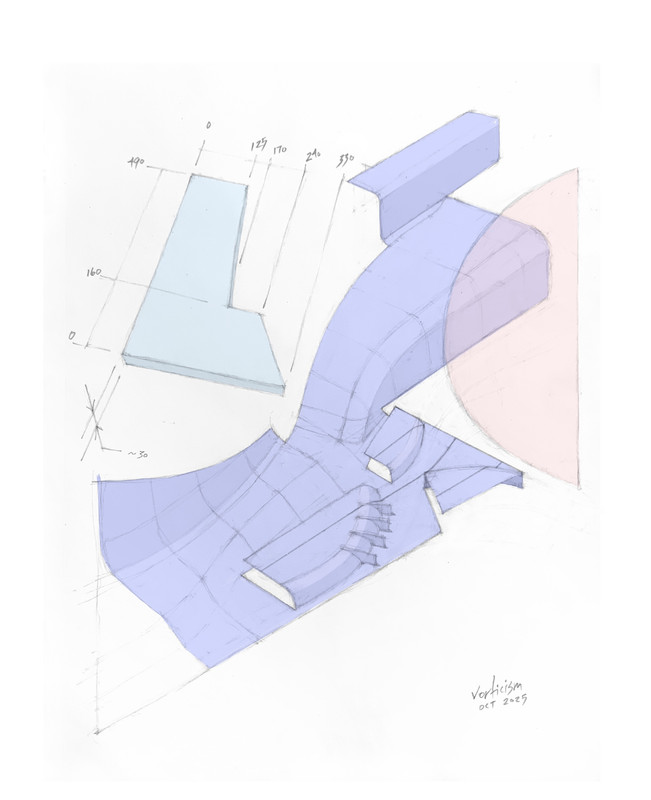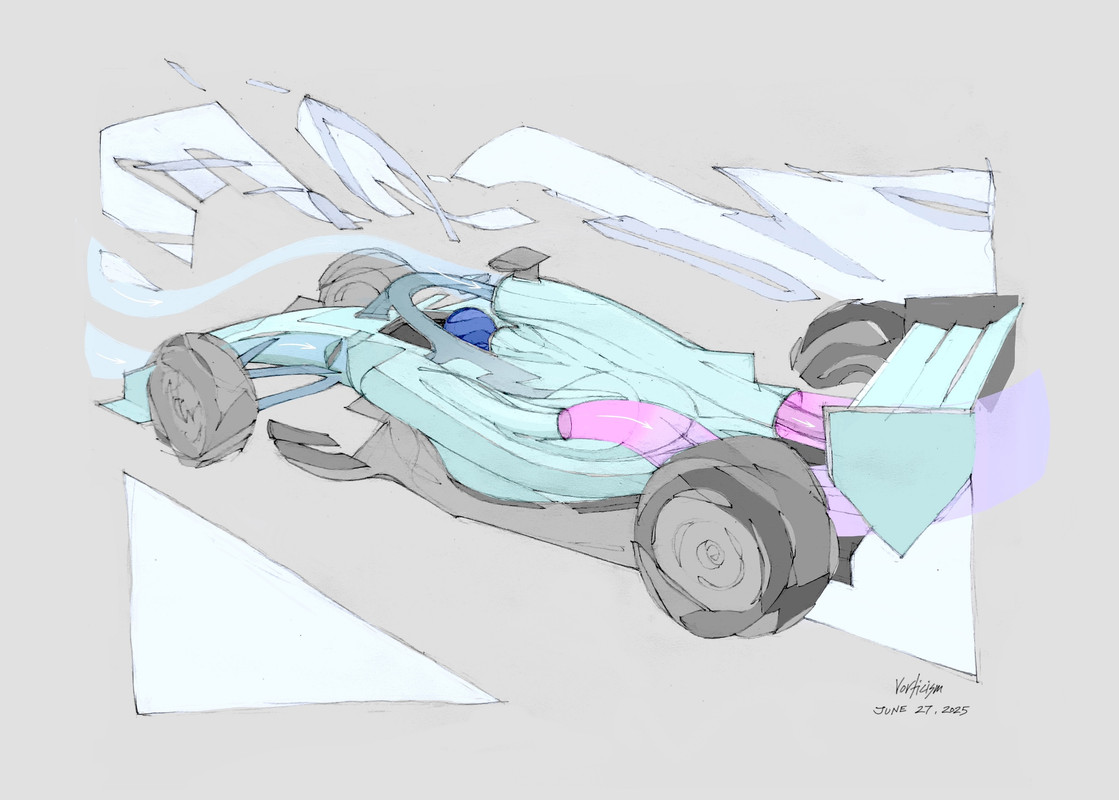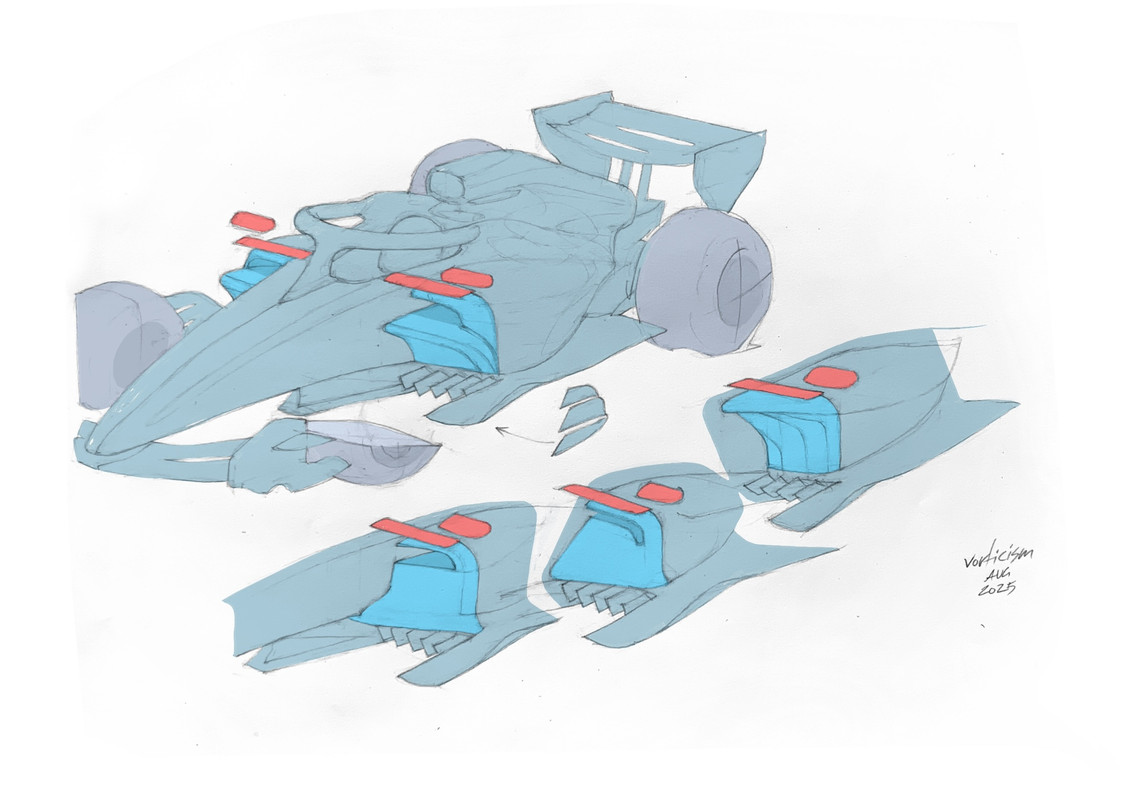Good work, timely. There was one more area I was planning to speculate about. Good that you are working at accurate scale. One thing to notice on your illustration is the t-tray area. As mentioned earlier in this thread, the regs were updated to allow an open t-tray with a faired or exposed shock absorber (pre-’22 type) along with the closed type that you depict (’22-onward type). If a team picks the open option, they will need to move some or all of that area’s housed auxiliary components to the sidepods. The cars are getting narrower and shorter, so presumably less open volume in the sidepods, although the cooling needs will reduce (70% of current fuel flow & more electric drive), meaning smaller radiators. From the side view you have, one can also get an idea of how the bigger louver allowance could be implemented.
More of a triangle with a notch. It’s a very specific shape with a very specific section allowance count, and it’s placed in a critical area, right next to the diffuser. Extends right up to the edge of it. One has to ask why, and why it was added so late in the game. Countless concepts could be proposed. Qvist on x/twitter has renderings of one option, a multi-element wing, which seems like the most realistic approach. I've been considering other concepts, a few of which are depicted below. Side-washing scoops, a duct (similar in proportions to an S-duct) to redirect a portion of floor overwash to the 2011 era EBD area, arrays of vanes, and a variation on a wing profile. If features are bridged together then these devices can become rather complex leading to sawtooth forms like we see on the current edge wings.


The t-tray (bib) and ‘Floor Corner’ areas are among the most important aero regions of these cars (leading and trailing edges of the floor), and they both got big updates to their regs 6-8 mo. before on-track testing.
In general I think cooling & packaging will see a lot of dev in these regs, as the floor has become much simpler and the car body will presumably be as compact as possible owing to the reduced overall footprint of the cars and the return of flat floor aero concept, if such a correlation to the previous flat floor cars is accurate.




